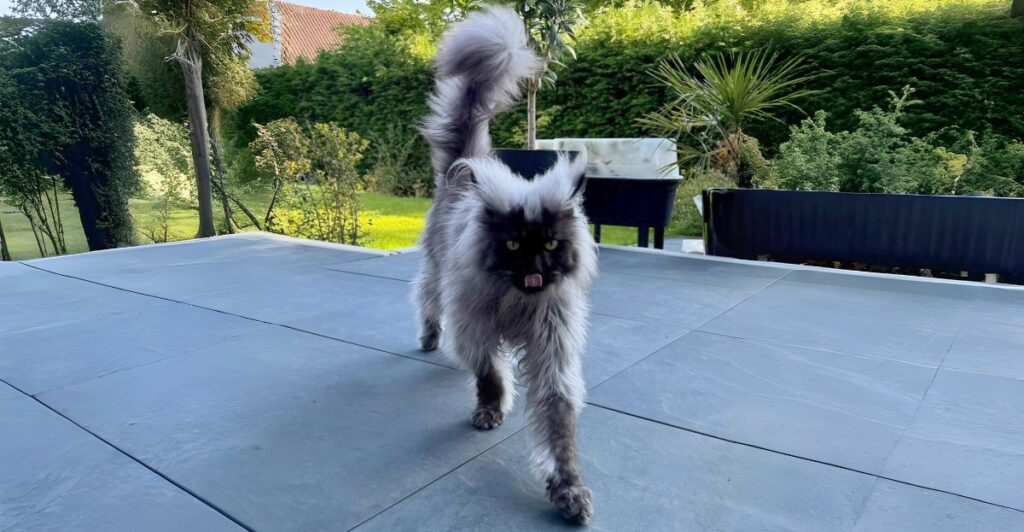
Maine Coons are often imagined as hefty, long-haired brown tabbies—but that’s just scratching the surface. This iconic breed comes in over 75 recognized color groups, with endless combinations shaped by genetics and rarity.
Shades like gold and silver are so uncommon they border on mythical, while others challenge everything we assume about feline coats. Gender plays a surprising role, with certain colors tied to sex chromosomes, and some hues are outright banned by breed standards, stirring debate in the cat community.
As we unpack the nine most mesmerizing Maine Coon colors, prepare for a deep dive into feline genetics, rarity, and aesthetic wonder. These cats are more than just beautiful—they’re walking genetic anomalies that break all the rules in the feline world.
1. Gold – The Rarest Shine in the Maine Coon World
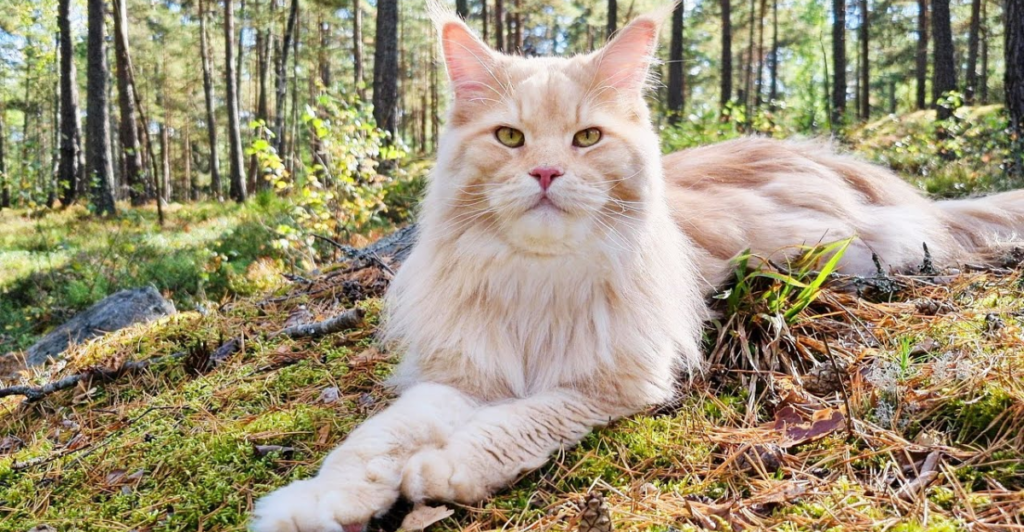
Gold Maine Coons are so elusive that many lifelong cat fans have never seen one firsthand. This shimmering color comes from a rare inhibitor gene that strips pigment from the undercoat, creating a dazzling golden appearance.
Unlike the classic brown tabby, golds appear to radiate light, earning their status as prized gems among breeders and collectors. The exact genetic mechanisms behind this glow remain partially mysterious, heightening their allure. Often confused with pale tabbies, true gold Maine Coons are unmistakable in their brilliance.
Their scarcity and beauty have led to fierce demand and steep prices. These “unicorn” cats captivate anyone lucky enough to see one, solidifying gold as one of the most fabled and sought-after colors in the Maine Coon spectrum.
2. Silver & Shaded Silver – A Color Written in Code
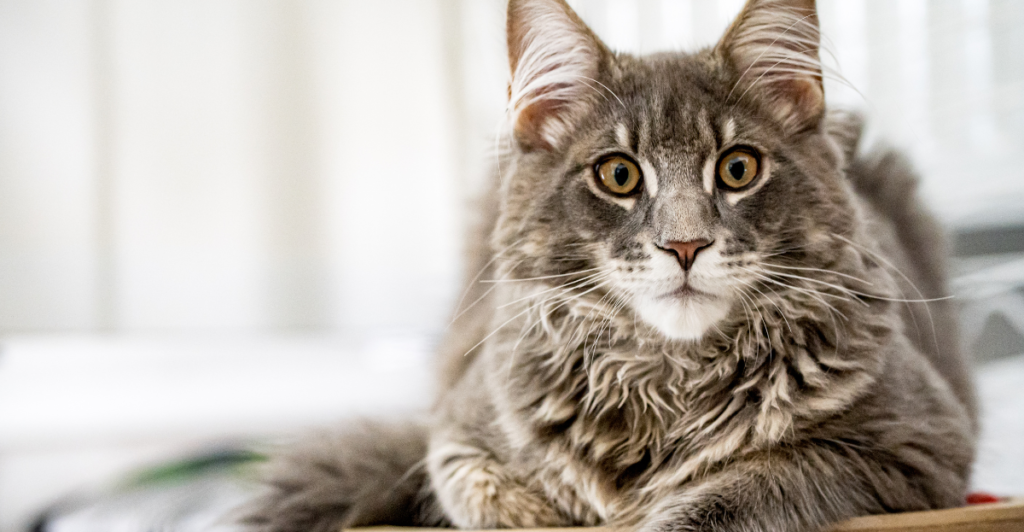
Silver and shaded silver Maine Coons owe their icy shimmer to precise genetics—both parents must carry the elusive inhibitor gene. This gene suppresses pigment along the hair shaft, giving these cats their frosted glow.
Shaded silvers take the effect further, with dark tips that fade into lighter bases, creating a gradient that seems to shift in the light. These cats often appear ethereal, their coats reflecting light like polished metal.
Silver is rare enough, but shaded silver is an even greater anomaly, requiring just the right mix of genes. Their rarity goes beyond looks—it’s grounded in statistical improbability. Every silver Maine Coon is a small miracle of genetics, celebrated for a look that captures both elegance and the magic of unpredictability.
3. Red – A Brilliant Hue Bound by Gender

Red Maine Coons, sometimes called orange or ginger, are as rare as they are genetically intriguing. Thanks to the way the O gene is carried on the X chromosome, red Maine Coons are almost always male.
Solid red females are a rarity, making them highly prized. The color itself is bold and fiery—not the pale “orange” many expect—but a rich, deep red that stands out dramatically. This genetic quirk has fed into myths and legends over the years.
Some breeders even consider red females lucky or genetically exceptional. The color is not just about visual appeal; it’s a lesson in feline inheritance and biology, where genetics decide both coat color and, often, the rarity of the cat itself.
4. White – The Color That Hides All Others
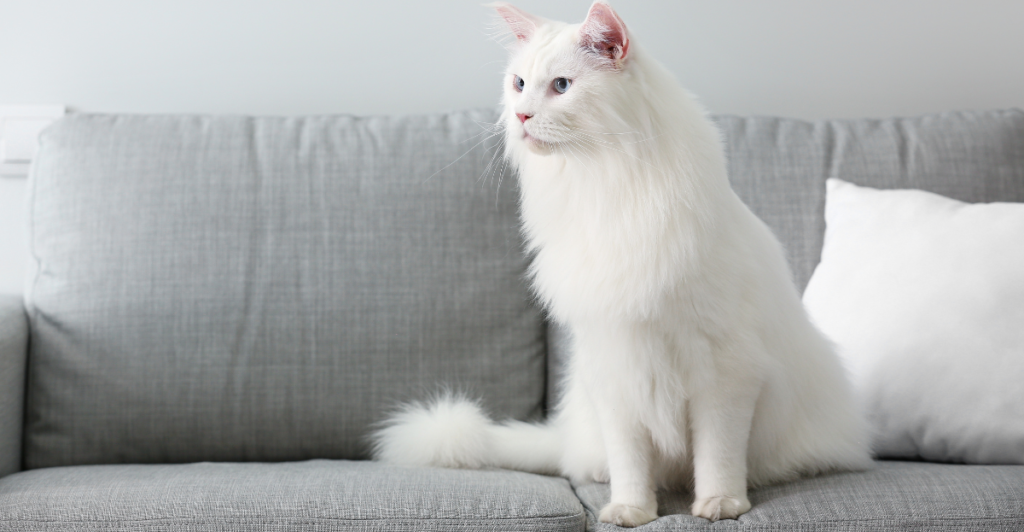
White Maine Coons might seem like blank slates, but their snowy coats are anything but simple. Technically, white isn’t a color—it’s the absence of visible pigment, caused by a masking gene that conceals any true color underneath.
This means a white Maine Coon could genetically be black, red, or any other color, a fact only discoverable through testing or offspring. White cats with blue eyes are particularly rare and have a high chance of being deaf, thanks to the same gene responsible for their striking appearance.
Their flawless coats and genetic mystery give white Maine Coons a captivating aura. They’re living paradoxes—seemingly pure on the surface, but hiding a wealth of unseen genetic information beneath the snow-like exterior.
5. Tortoiseshell – A Genetic Patchwork of Personality
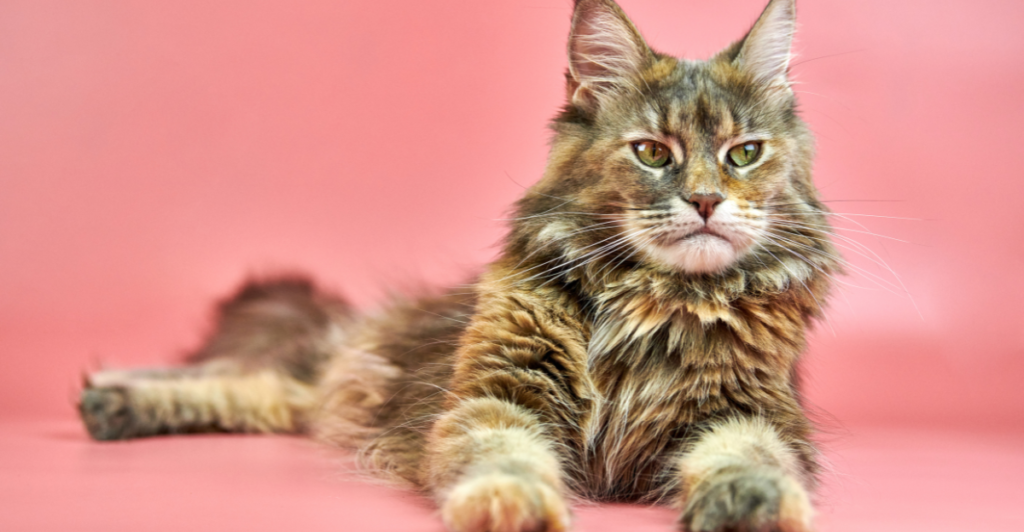
Tortoiseshell Maine Coons are a marvel of genetic diversity, combining black and red in patchy, mosaic-like patterns. This coloring occurs almost exclusively in females, thanks to their two X chromosomes.
Males rarely carry the necessary chromosomal pair to display this pattern. The result? No two torties ever look alike, making each cat visually one-of-a-kind. Many owners and breeders believe these cats have a strong-willed personality known as “tortitude,” though science hasn’t fully confirmed this trait.
Visually and genetically complex, tortoiseshell Maine Coons are more than just eye-catching—they’re a direct reflection of chromosomal variety. Their one-of-a-kind coats symbolize nature’s capacity for beautiful randomness, with each tortie standing as a colorful testament to feline individuality and genetic intrigue.
6. Smoke – The Illusionist’s Coat
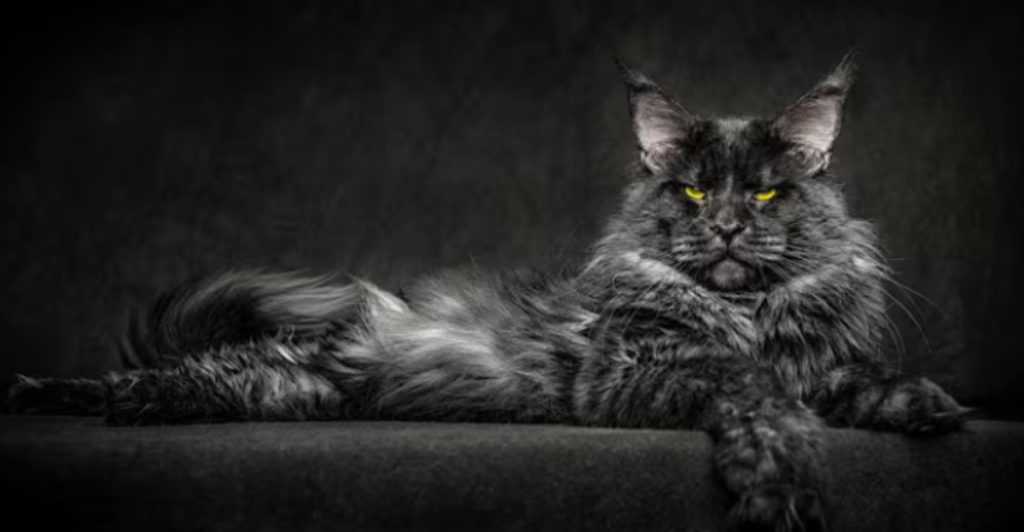
Smoke Maine Coons are full of surprises. At rest, their coats seem solid black, blue, or red—but with movement, their pale undercoats flash through, revealing a dramatic smoky effect. This optical trick is caused by the inhibitor gene, which limits pigment to the hair tips, creating a dual-tone illusion.
Their coat appears to shift and change in motion or under different light, making smoke-patterned Maine Coons a favorite among cat photographers and show judges. The visual effect challenges traditional definitions of color in cats.
These unique felines draw admiration not just for their beauty, but for the rare genetic formula that gives them such dynamic coats. Smoke Maine Coons are, in many ways, the optical illusionists of the feline world.
7. Blue – A Subtle Twist on Classic Black
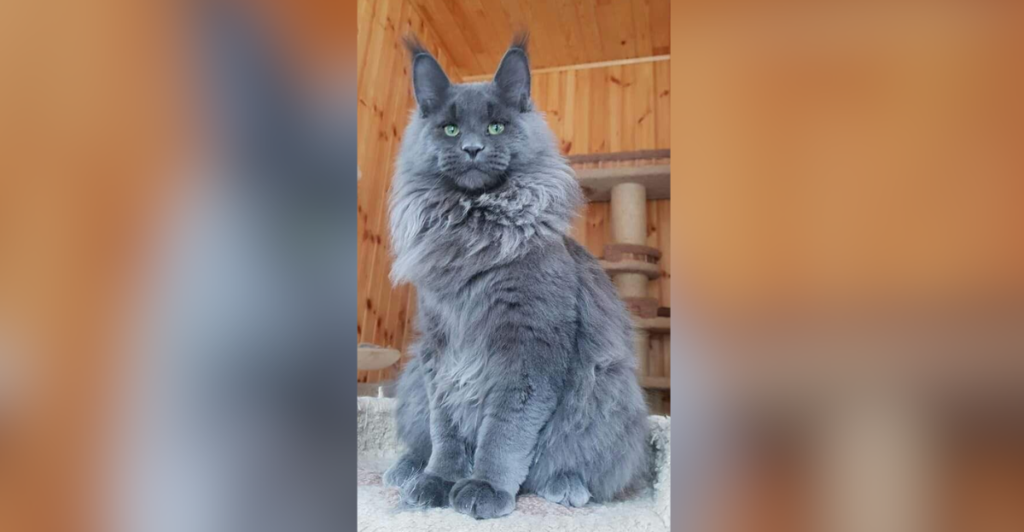
Blue Maine Coons aren’t actually blue in the literal sense—their color is a diluted version of black, made possible by a specific recessive gene. This dilution transforms dark pigment into a soft, cool gray that often shimmers with silvery tones in the light.
To express this color, both parents must carry the dilution gene, making it a genetic rarity. Their fur, paired with vibrant yellow or green eyes, gives blue Maine Coons a look that’s both understated and unforgettable.
Their appearance may be subtle, but their genetic story is anything but. Blue Maine Coons challenge the idea that rare beauty must be bold—instead, they offer a quiet, elegant presence that captivates with every graceful step and silvery shine.
8. Calico – A Colorful Symbol of Rarity
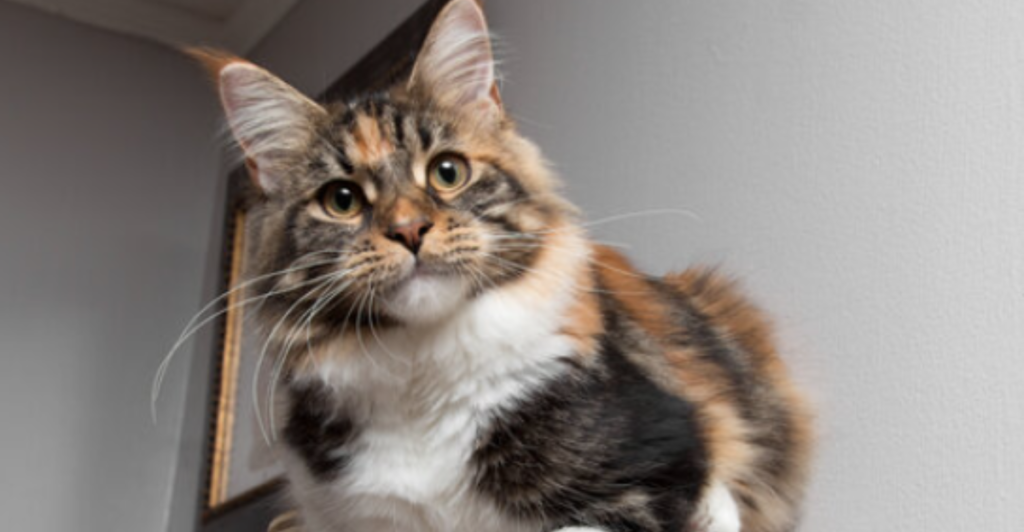
Calico Maine Coons are dazzling tri-color cats that mix black, red, and white in spontaneous, one-of-a-kind patches. Like tortoiseshells, calicos are almost always female due to their two X chromosomes, which are required for this color blend.
The white areas come from a separate gene called white spotting, adding to the pattern’s complexity. No two calicos are ever the same, making them a favorite in folklore and popular culture. Many cultures consider calicos symbols of good fortune, and their genetic rarity only enhances their legendary status.
Each calico is a visual masterpiece—a collision of chance, color, and chromosomes that results in one of the most beloved and eye-catching Maine Coon varieties in the feline world.
9. Black—The Sleek Classic With a Gothic Twist
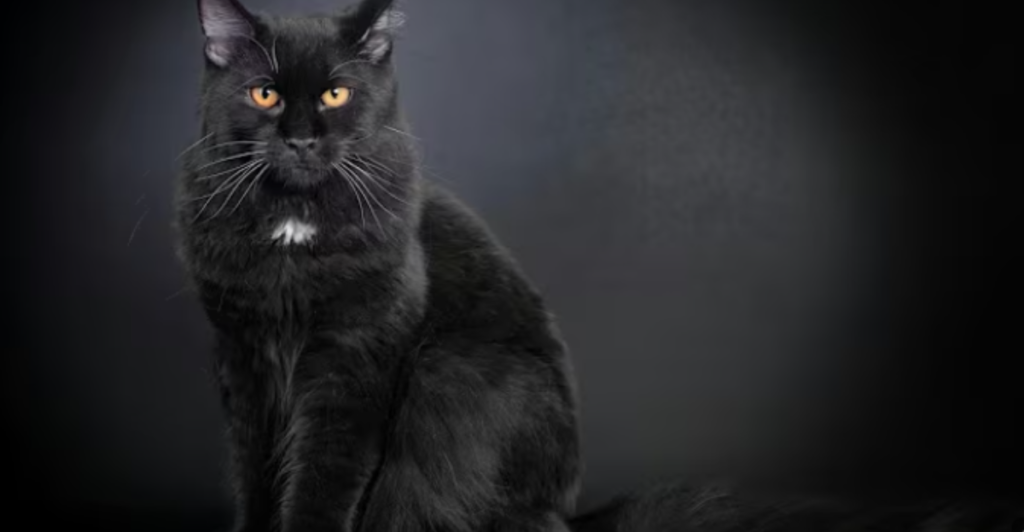
Solid black Maine Coons may seem simple at first glance, but their inky coats hold an air of mystery and elegance that sets them apart. Unlike tabbies or smokes, these cats have uniformly pigmented fur from root to tip, creating a rich, velvet-like appearance.
When paired with bright copper or green eyes, the contrast is stunning. While black is genetically dominant, finding a perfectly solid black Maine Coon with no ghost markings or shading is surprisingly rare.
Their timeless look has earned them nicknames like “mini panther” and made them iconic in pop culture and folklore. Despite their dark aesthetic, black Maine Coons often have playful, affectionate temperaments—making them beloved for both their beauty and their charm.
Explore more of our trending stories and hit Follow to keep them coming to your feed!

Don’t miss out on more stories like this! Hit the Follow button at the top of this article to stay updated with the latest news. Share your thoughts in the comments—we’d love to hear from you!







